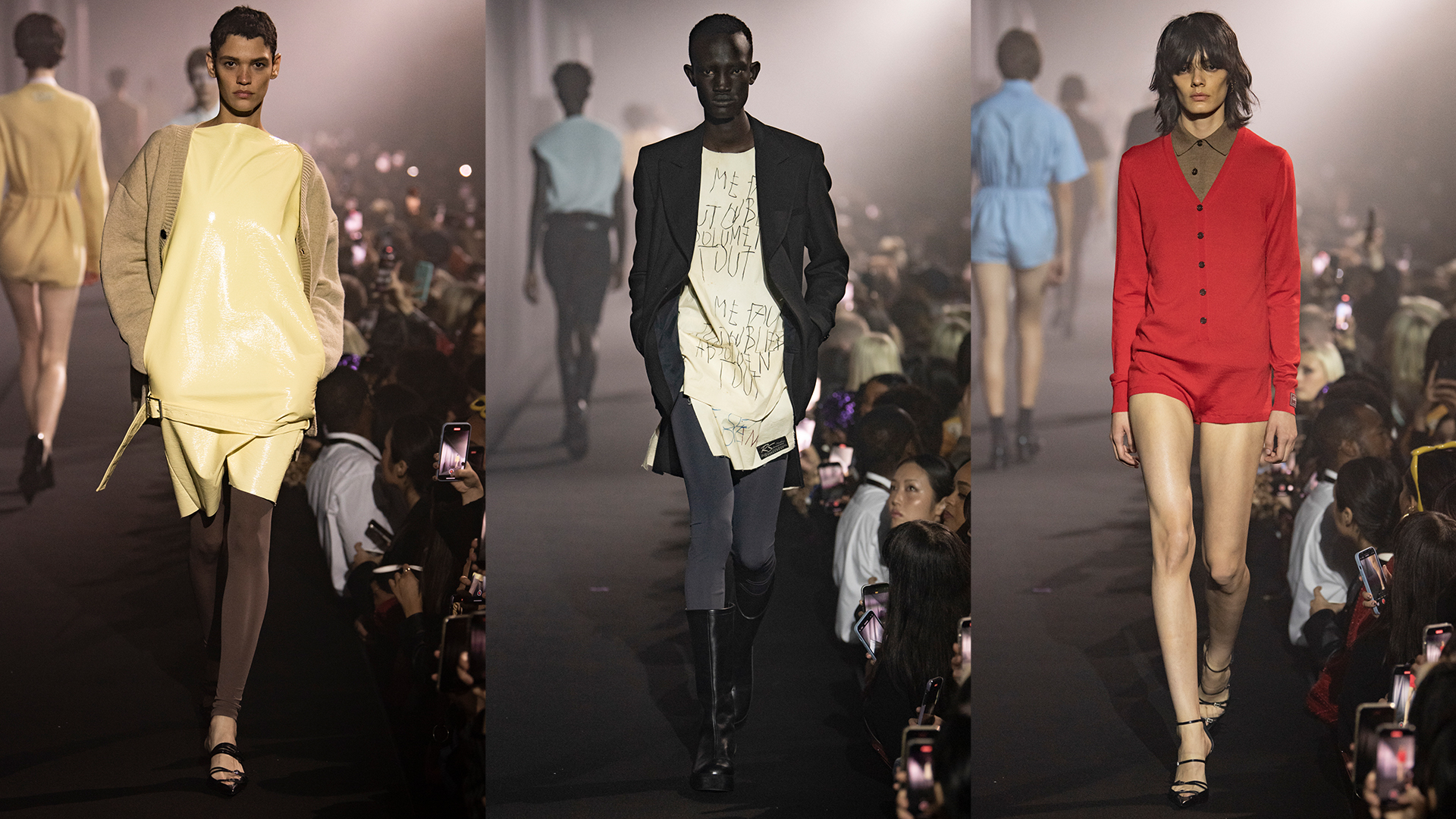It’s taken a while for Raf Simons to show in London, but as with many things that are delayed due to unforeseen circumstances (in this case, the passing of Queen Elizabeth II), sometimes it all works out for the best. During Frieze Week — an art fair that Raf has long been known to frequent — the Belgian designer staged his first show in London to a thousand-strong audience of students, artists, designers, gallerists, musicians, DJs, and even i-D readers (we partnered with Raf on the event) who jostled along the black bar of cavernous techno club Printworks, chugging down Asahi beers and vodka-sodas as green strobe-lights created the air of a rave, soundtracked by Clara 3000 on the decks. Somehow it managed to bypass the chaos that has accompanied fashion’s penchant for stadium-scale events branded as democratic fashion shows, and instead felt like a great night out for a city in the midst of a socio-economic crisis. “I didn’t want a show for 300 people sitting in rows,” Raf explained ahead of the show. “This is a show that’s pure democracy. No hierarchy. Someone who might usually find themselves on the front row will be next to a club kid or a student in their first year at CSM.”
It was, in part, inspired by a visit to the city last year, during which Raf was reminded of why he fell in love with the city in the first place. You see, British youth culture and music has always been a lodestar for Raf, ever since he was a Catholic schoolboy in the small Flemish village of Neerpelt, with a record store and a newsstand as his sole touchpoints for discovering what was going on further afield in the world. He fell in love with Blitz kids and Camden punks through the pages of i-D and The Face — and later in his career, with the city’s contemporary art scene and its rebellious YBAs, who shared the same spirit that came to define Raf’s creative approach. “I really find this the place in the world, the city in the world where I feel such incredible energy. And I don’t mean in terms of fashion brands, but the people — and all of these identities and the way they express themselves,” he enthuses. “It’s a very beautiful contrast between classicism and non-classicism, establishment and anti-establishment, high and low.” Though he has noticed that the country is “a bit of a hurt animal” — for obvious political reasons — he still finds it just as inspiring as he did when discovering it as a teenager in the pages of this magazine.
But with this collection — the first that he has shown in a city he hasn’t been based in — Raf was keen to avoid the obvious references. It would be too expected of him, he decided, to riff on the British references that have always been present in his work (and even on it in the case of that AW01 MA-1 bomber that fetched almost $50,000 on Grailed). He found guidance in the work of the late Belgian artist Philippe Vandenberg, whose childlike scribbled phrases (sometimes etched in his own blood) became a key motif in the collection, courtesy of a partnership with the artist’s estate. One phrase, ‘Kill Them All and Dance’, was especially poignant for the designer — and a pertinent reminder as to why he had to delay his show after the Queen’s death. “It’s not about people — it’s about giving yourself the freedom to kill your own work in order to move on and make new work,” Raf explains. “It was an interesting way for me to kind of think that maybe, when you’re doing certain things in a certain way for such a long time, and it’s also a nature to do the things you do, that you need to find another angle and make something new.”
What would provide new ground for a fresh approach for the designer? The stripped-back, agile clothing of classical dancers. Sure, it would have been easy to riff on the kind of clothes that people were to go out raving and dancing (although really, it’s just shuffling) in sweaty crowds. Instead, Raf looked to the world of dance and some of his favourite choreographers, such as Michael Clarke, Anne Teresa De Keersmaeker, and Justin Peck – who directed the video of a dancer wearing a sleeveless jacket and red leotard that was projected at the end of the catwalk – and the ways in which they deconstructed the classicism of ballet to create new forms of contemporary dance. Hosiery – a nod to the work of his friend, the British artist Sarah Lucas – also became a central theme to the collection, which Raf described as “probably the most body-conscious collection I have ever done” and “a little bit of a rejection of the oversized silhouettes that I’ve been doing for many years.”
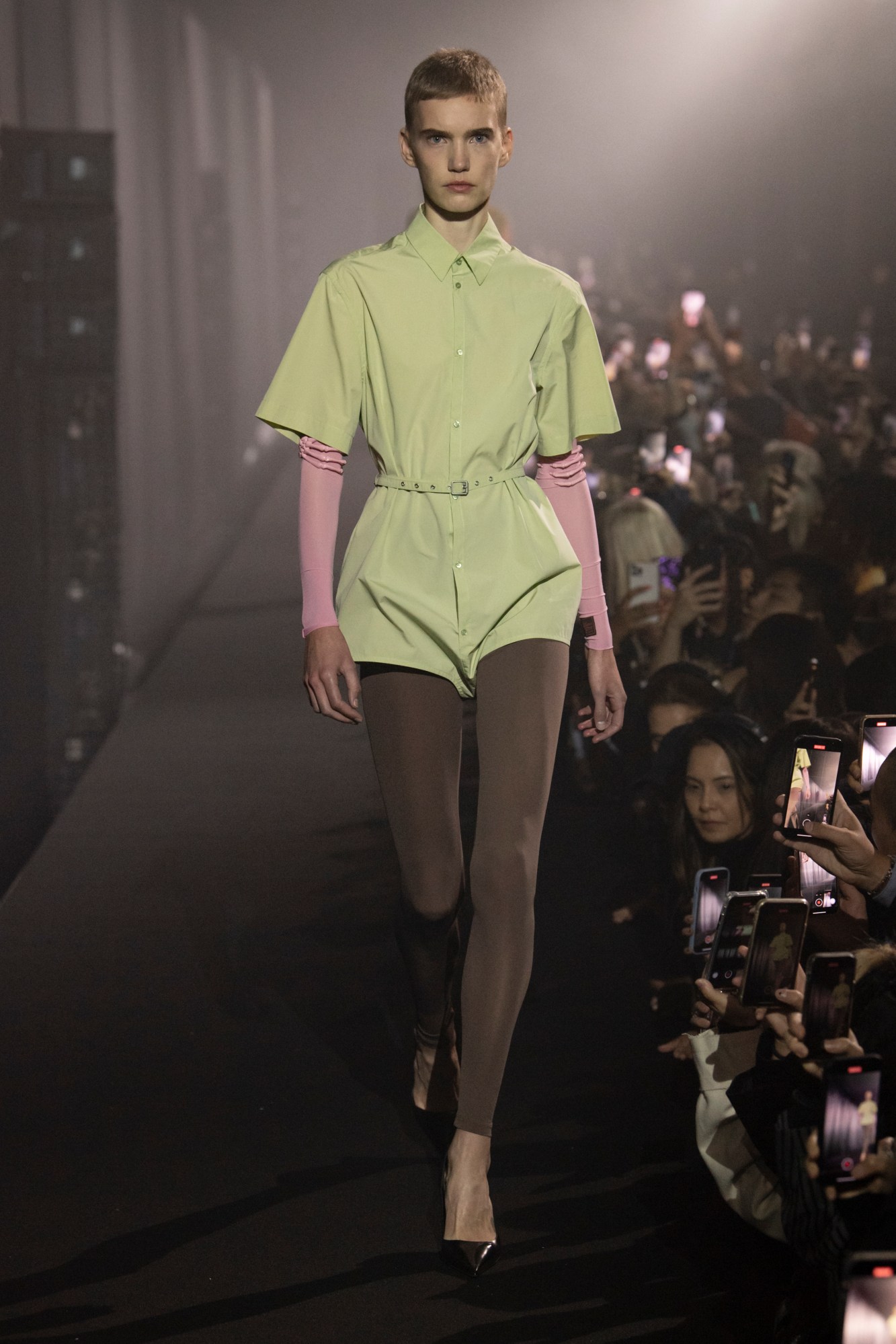
Leggings (in bright chartreuse, pale pink, crimson and polka-dotted white), fine-gauge knitted rompers, abbreviated cotton shorts, and Catholic schoolboy tailoring slashed away to become sleeveless tanks and plunging blousons echoed the ideas of movement and agility. “Imagine The Blue Lagoon in a kind of English schoolboy material,” he reflects, expanding on the ideas of rawness and savagery in the collection. He started with classical garments like grey wool tailoring and white cotton shirts — and stripped them back, reducing and reducing in search of an essentialism, until nothing was left but the gesture of the garment with the body exposed. Most of the looks in the collection came packaged in romper bodices — almost like loose leotards. It goes without saying that there was a genderless spirit to the collection. “In ballet, you would have it in stretch materials, but here it never stretches on the body here — it’s always slightly loose,” Raf points out. “It sits in a very classicist way, almost very garderobe.”
You get the sense that Raf is planting the seeds for renewal at his namesake label, perhaps reconsidering his own legacy and pushing himself forward in search of contemporary youth culture. Unlike many designers of his generation, that doesn’t mean plundering 2000s nostalgia in a bid to win over Gen-Z, but rather, offering a sincere vision of what of his sartorial universe and trying to find some new ground. And as far as the democratisation of fashion shows goes, it offered a welcome respite from the concert arenas and ticketed street fairs that have become commonplace elsewhere. Raf invited a lot of people into his universe to bear witness to the ways that it’s evolving. Sometimes, all it takes is a simple gesture like that to really make a bold statement.
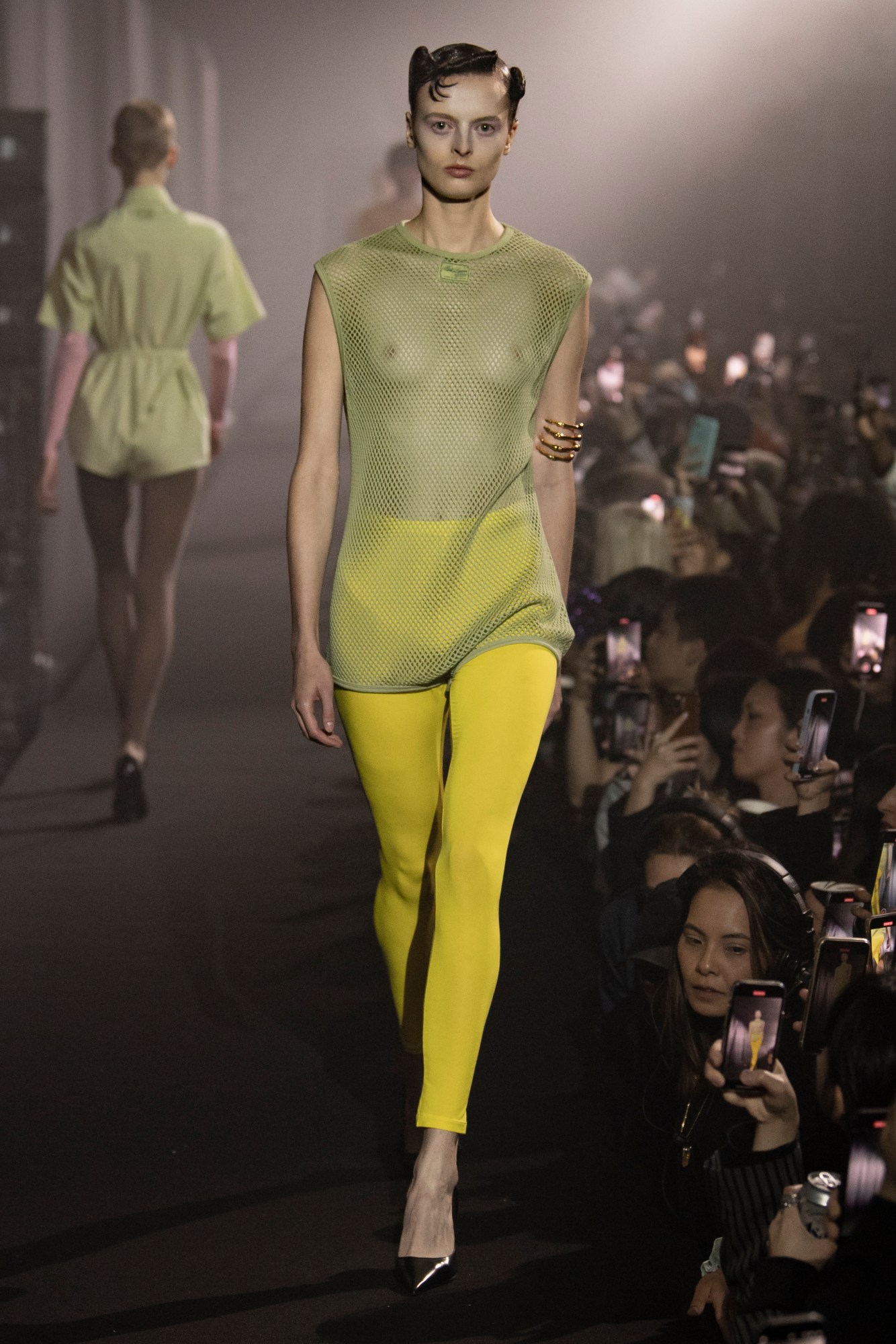

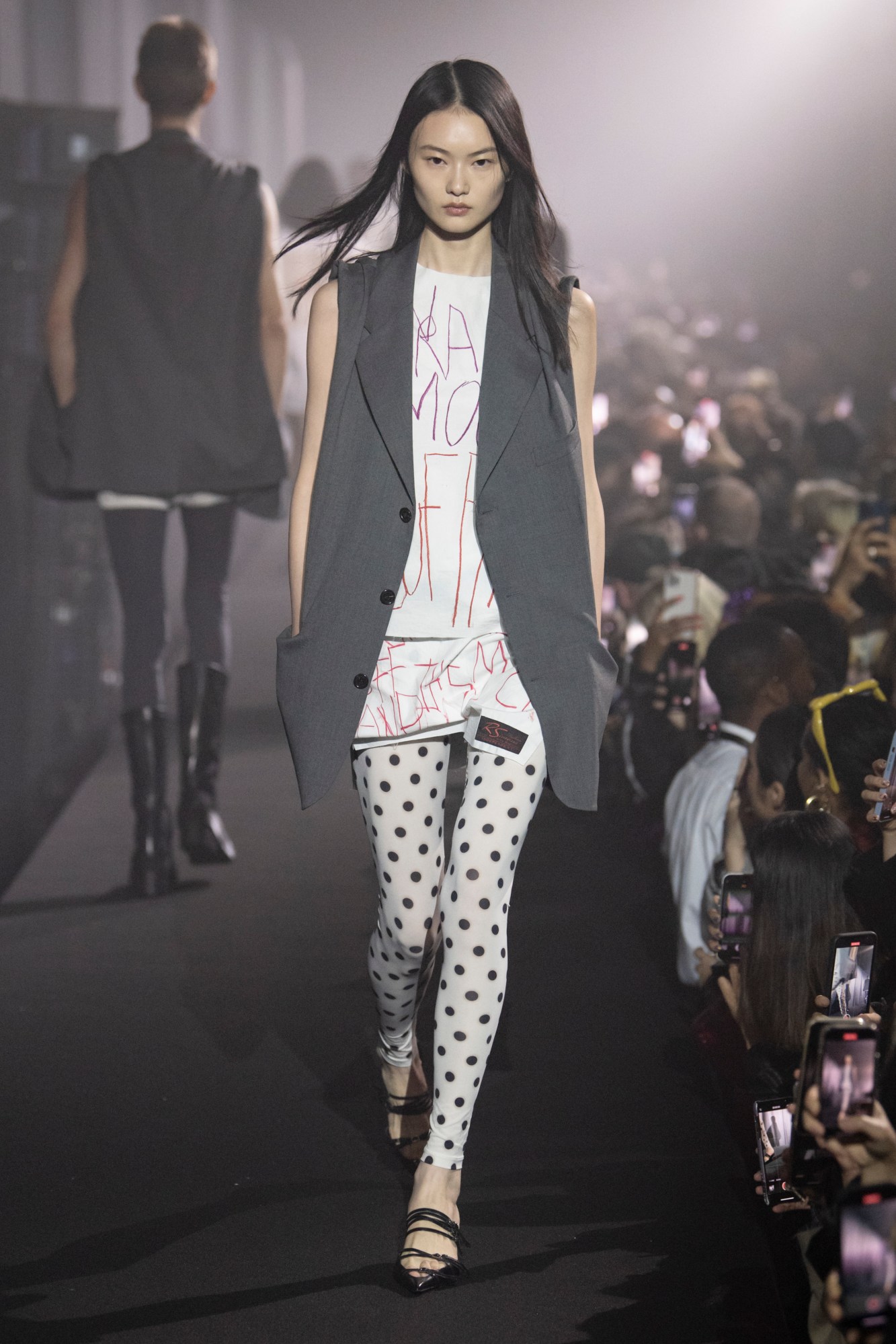
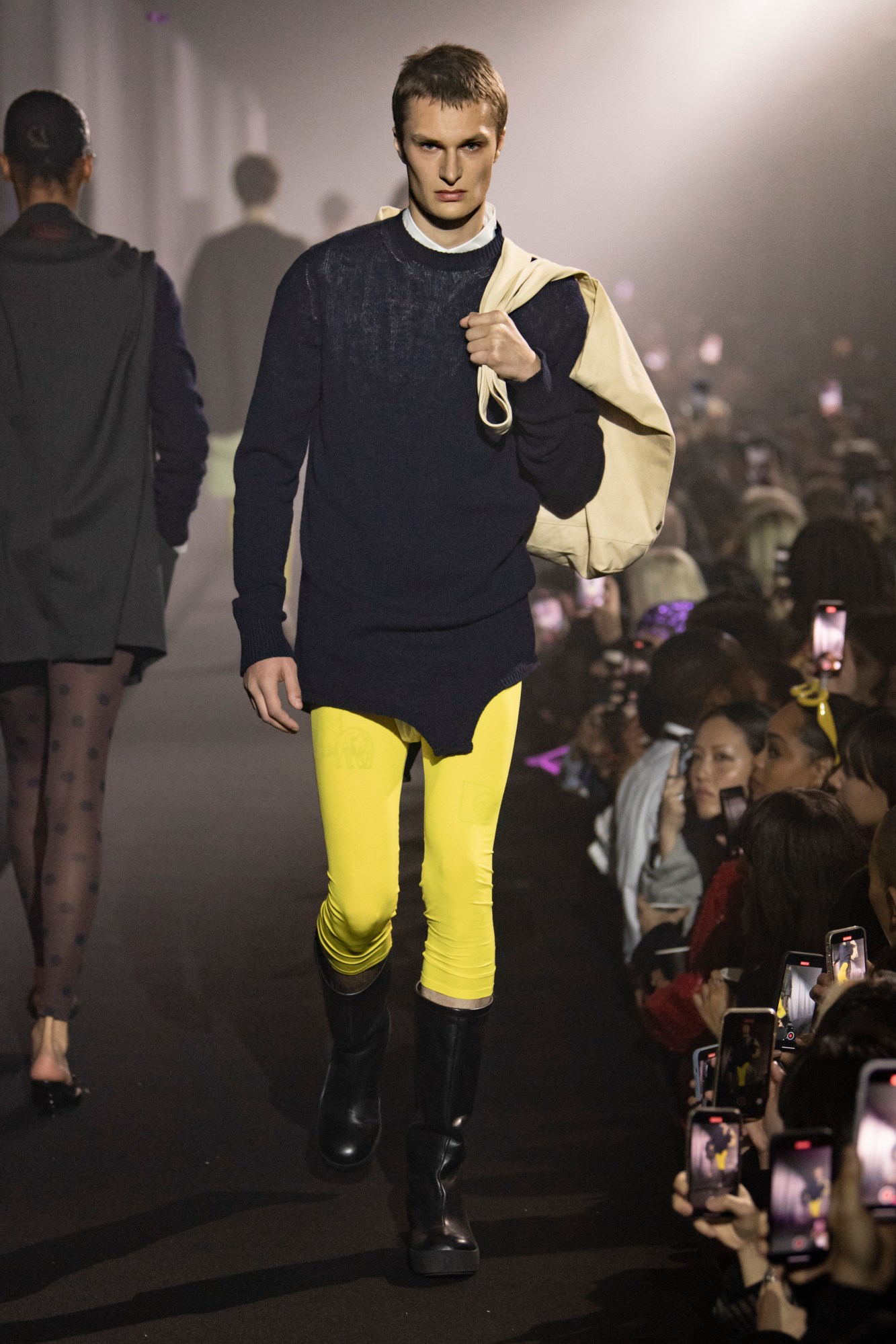
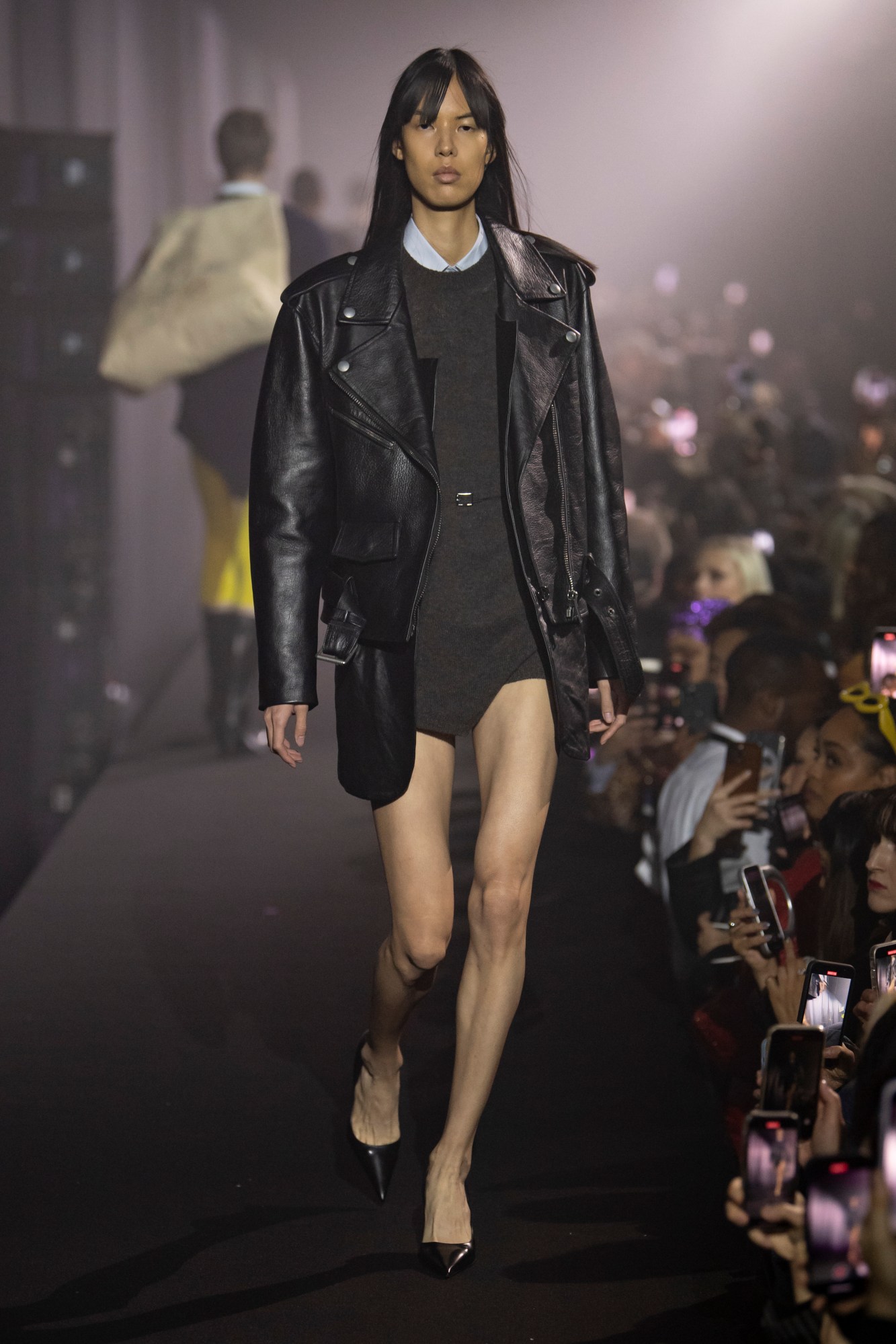
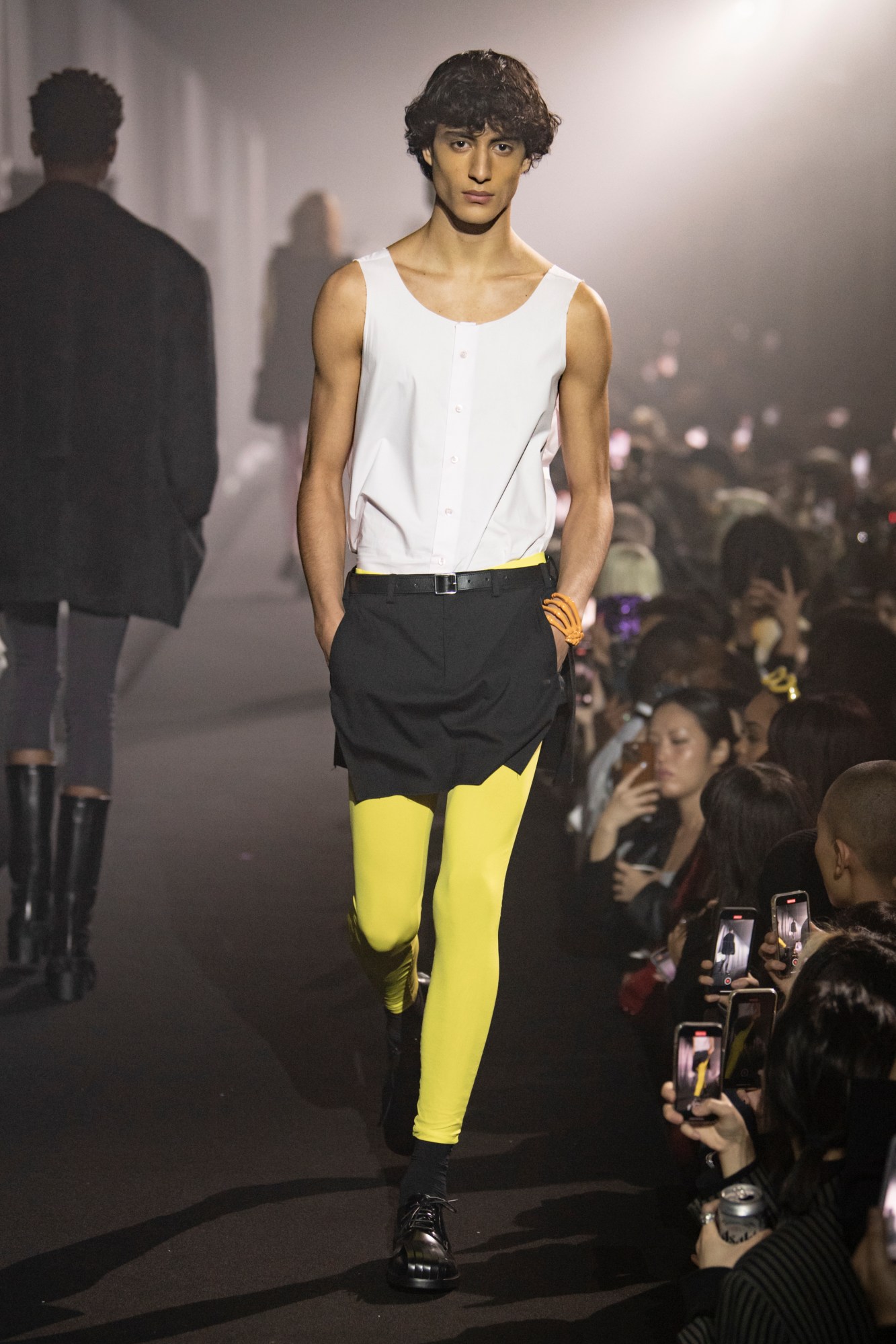
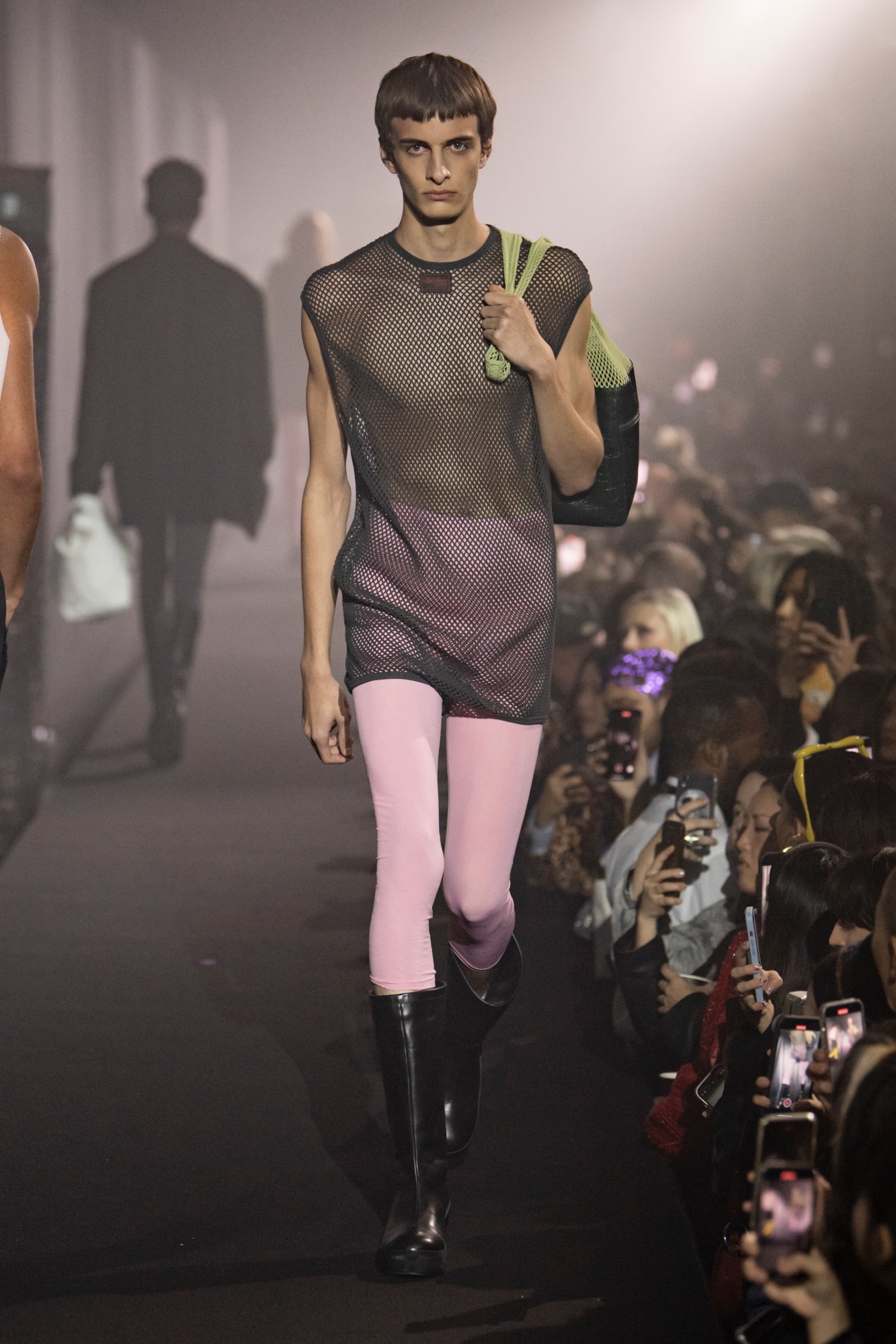
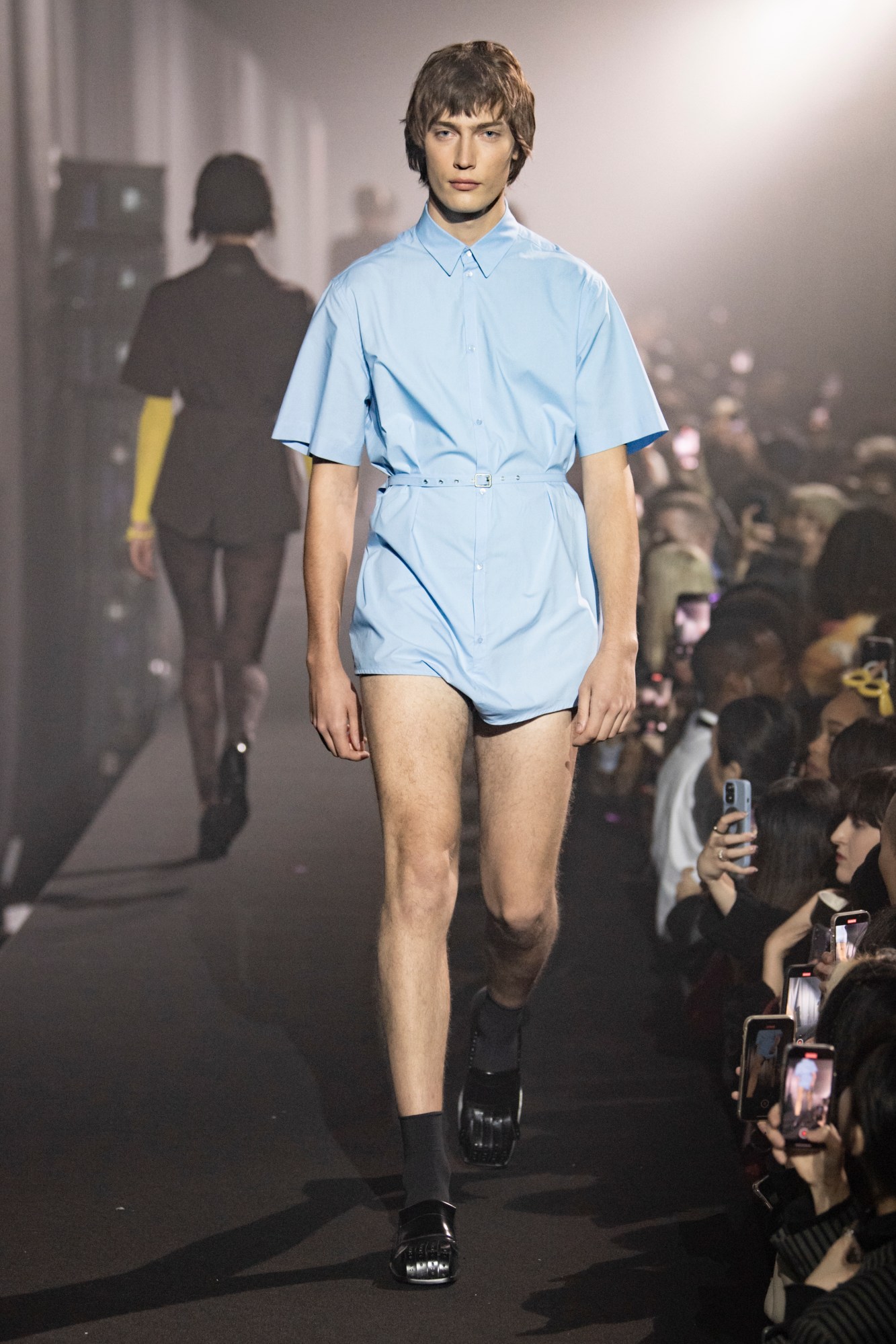
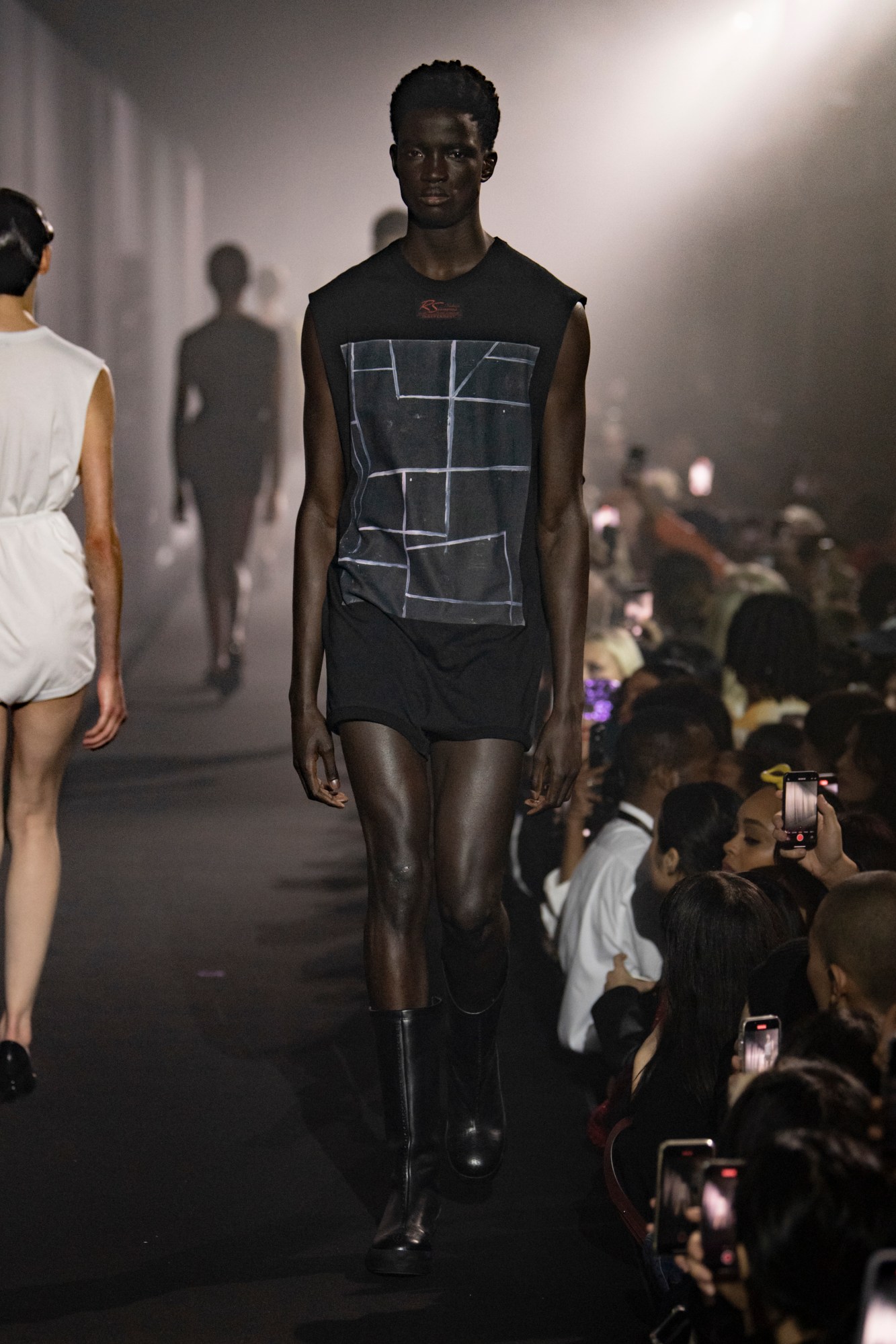
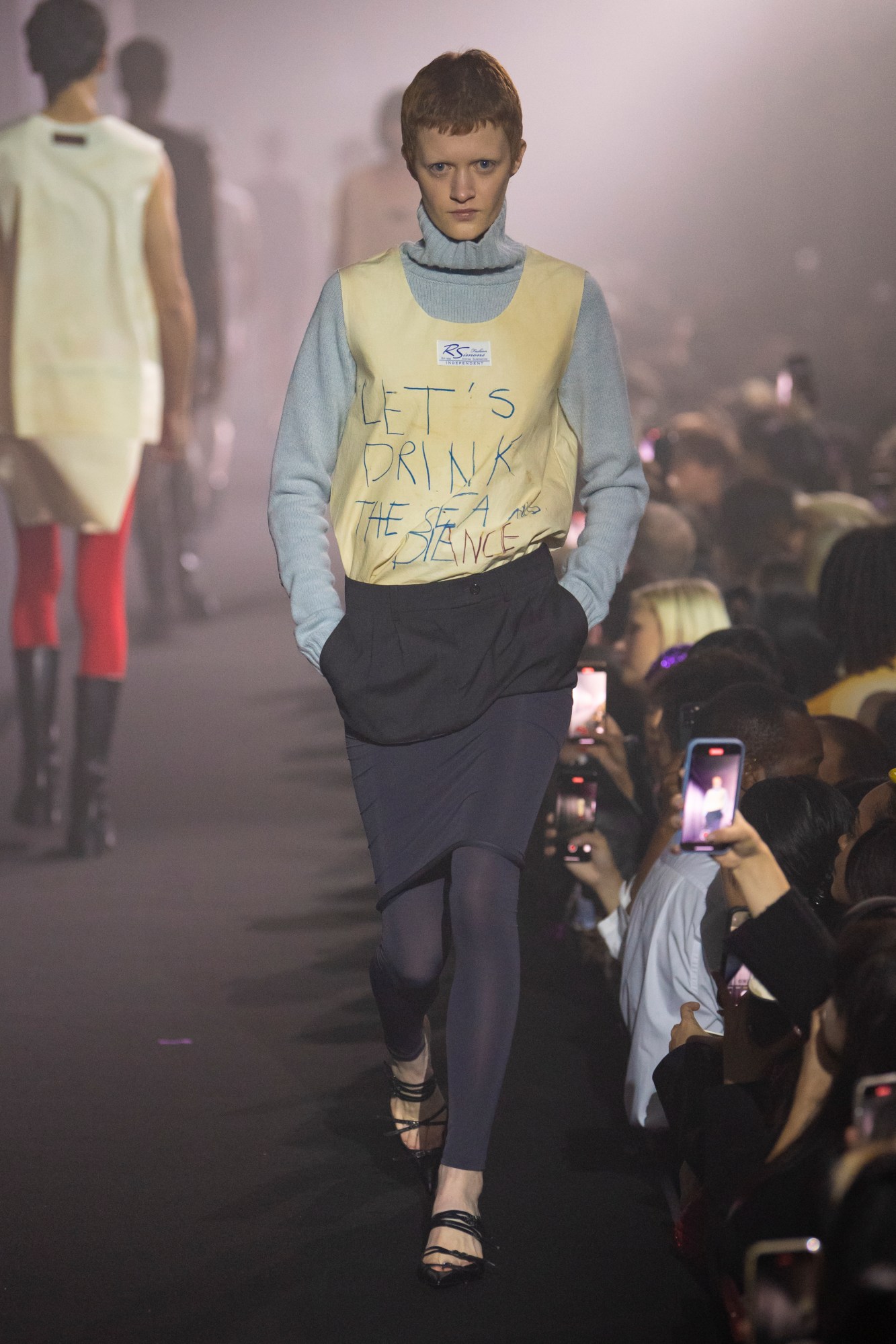
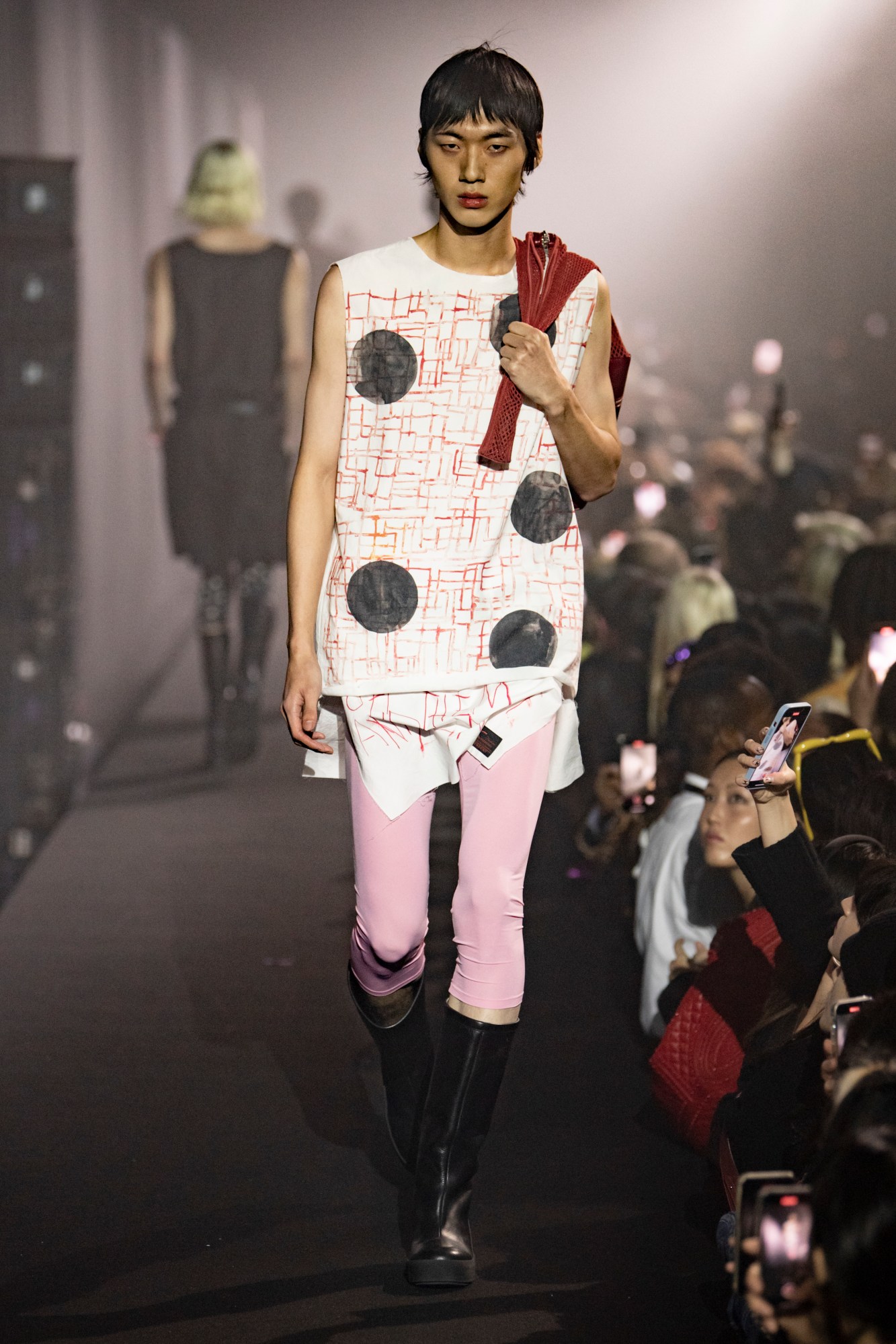

Credits
Images courtesy of Raf Simons
